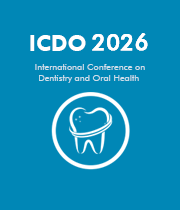Dental Biomechanics
Dental biomechanics is the application of biomechanical principles and techniques to the practice of dentistry. It is a field of study that focuses on the design and analysis of mechanical systems used in dental procedures. The goal of this field is to develop dental instruments and techniques that are effective and safe for patients. Dental biomechanics is an important part of modern dentistry. It is used to help clinicians accurately diagnose and treat a variety of dental conditions and diseases. By understanding the mechanical properties of different materials and their application in dental procedures, clinicians can develop treatments that are both effective and safe for the patient. The field of dental biomechanics involves the study of the mechanical properties of various materials used for dental procedures. This includes the study of materials such as metals, plastics, and ceramics that are used in dentures, bridges, crowns, implants, and other prosthetic devices. In addition, biomechanical analysis is also used to study the forces and stresses that are applied during various dental procedures. By understanding these mechanical properties, clinicians can design dental instruments and techniques that are effective and safe for patients. In addition to the design and analysis of dental instruments, dental biomechanics also involves the study of the forces and stresses that are applied during various dental procedures. This includes the study of the forces that are applied during teeth grinding, orthodontic treatments, and implant placement. In addition, biomechanical analysis is also used to understand the forces that are applied during tooth extraction, root canal treatments, and periodontal therapy. By understanding the forces involved in these procedures, clinicians can develop treatments that are both effective and safe for the patient. In conclusion, dental biomechanics is an important field of study that focuses on the design and analysis of mechanical systems used in dental procedures. By understanding the mechanical properties of different materials and their application in dental procedures, clinicians can develop treatments that are both effective and safe for the patient. In addition, biomechanical analysis is also used to study the forces and stresses that are applied during various dental procedures. Through this field of study, clinicians can develop treatments that are both effective and safe for the patient.

David Geoffrey Gillam
Queen Mary University of London, United Kingdom
Christopher Turner
Spacemark Dental, United Kingdom




Title : Evaluating hygienist follow up for head and neck oncology patients in secondary care: Results from a two cycle audit
Peter Basta, Newcastle Dental Hospital, United Kingdom
Title : Atypical facial pain unravelled
Christopher Turner, Spacemark Dental, United Kingdom
Title : New treatment of temporomandibular disorder through muscle balance and muscle regeneration by activation of quiescent muscle stem cells( satellite cells) with mitochondrial dynamics
Ki Ji Lee, National Reserach Foundation & Busan Medical University, Korea, Republic of
Title : MRONJ and ORN: Referral or management in primary care? Navigating guidelines in the context of long waiting lists
Alisha Sagar, NHS England, United Kingdom
Title : Managing the unexpected: An Insight into supernumerary teeth
Bahar Gharooni Dowrani, Guy's and St Thomas' NHS Foundation Trust, United Kingdom
Title : Laxative prescribing for post operative head and neck cancer patients at Derriford Hospital
Pui Sze Kylie Li, Cardiff and Vale University Health Board, United Kingdom